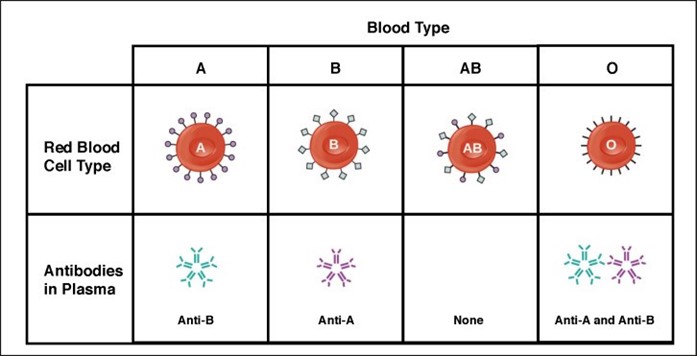A nurse is reviewing the PT, aPTT, and INR laboratory values for a client who is experiencing an acute episode of disseminated intravascular coagulation (DIC). Which of the following laboratory results should the nurse expect?
The laboratory values are within the expected reference range.
The laboratory values are prolonged.
The laboratory values are the same as the previous test values.
The laboratory values are decreased.
The Correct Answer is B
Choice A Reason: This is incorrect because the laboratory values are not within the expected reference range in a client who has DIC. DIC is a condition that causes abnormal activation of the clotting cascade, leading to widespread microthrombi formation and consumption of clotting factors and platelets. This results in bleeding complications and organ dysfunction.
Choice B Reason: This is correct because the laboratory values are prolonged in a client who has DIC. PT, aPTT, and INR are tests that measure the time it takes for blood to clot. PT measures the extrinsic pathway, aPTT measures the intrinsic pathway, and INR is a standardized ratio of PT. In DIC, these tests are prolonged because of the depletion of clotting factors and platelets.
Choice C Reason: This is incorrect because the laboratory values are not the same as the previous test values in a client who has DIC. DIC is an acute and dynamic condition that can change rapidly depending on the underlying cause and treatment. The laboratory values may fluctuate between normal, prolonged, or shortened depending on the balance between clotting and bleeding.
Choice D Reason: This is incorrect because the laboratory values are not decreased in a client who has DIC. Decreased laboratory values would indicate a shortened clotting time, which can occur in some cases of DIC when there is excessive clotting and thrombosis. However, this is not the typical finding in DIC, as most clients present with bleeding manifestations and prolonged clotting time.
Nursing Test Bank
Naxlex Comprehensive Predictor Exams
Related Questions
Correct Answer is C
Explanation
Choice A: Contacting the provider for further orders is not necessary, because the client has type AB blood, which is compatible with any other blood type. The client can receive type B blood without any adverse reactions.
Choice B: Notifying the blood bank of the discrepancy is not required, because there is no discrepancy. The blood bank sent the correct type of blood for the client, according to their blood type.
Choice C: Administering the blood as ordered is the correct action, because type B blood is compatible with type AB blood. The client will not have any transfusion reactions or complications from receiving this type of blood.
Choice D: Completing an incident report is not appropriate, because there is no incident. The nurse did not make any error or mistake in administering the blood to the client. There is no need to document or report anything unusual.

Correct Answer is C
Explanation
Choice A Reason: This choice is incorrect because it indicates respiratory alkalosis, not AKI. Respiratory alkalosis is a condition in which the lungs eliminate too much carbon dioxide (CO2) from the blood, resulting in a low level of CO2 (PaCO2) and a high level of pH. A normal PaCO2 range is 35 to 45 mm Hg, and a normal pH range is 7.35 to 7.45, so a value of 30 mm Hg and 7.49 indicate respiratory alkalosis.
Choice B Reason: This choice is incorrect because it indicates respiratory acidosis, not AKI. Respiratory acidosis is a condition in which the lungs cannot eliminate enough CO2 from the blood, resulting in a high level of CO2 (PaCO2) and a low level of pH. A value of 46 mm Hg and 7.26 indicate respiratory acidosis.
Choice C Reason: This choice is correct because it indicates metabolic acidosis, which is a common complication of AKI. Metabolic acidosis is a condition in which the body produces too much acid or loses too much base, resulting in a low level of bicarbonate (HCO3) and a low level of pH. A normal HCO3 range is 22 to 26 mEq/L, so a value of 14 mEq/L indicates metabolic acidosis. The low PaCO2 value (30 mm Hg) is due to the respiratory compensation mechanism that tries to restore the acid-base balance by increasing the ventilation and eliminating more CO2.
Choice D Reason: This choice is incorrect because it indicates metabolic alkalosis, not AKI. Metabolic alkalosis is a condition in which the body loses too much acid or gains too much base, resulting in a high level of bicarbonate (HCO3) and a high level of pH. A value of 30 mEq/L and 7.49 indicate metabolic alkalosis.

Whether you are a student looking to ace your exams or a practicing nurse seeking to enhance your expertise , our nursing education contents will empower you with the confidence and competence to make a difference in the lives of patients and become a respected leader in the healthcare field.
Visit Naxlex, invest in your future and unlock endless possibilities with our unparalleled nursing education contents today
Report Wrong Answer on the Current Question
Do you disagree with the answer? If yes, what is your expected answer? Explain.
Kindly be descriptive with the issue you are facing.
